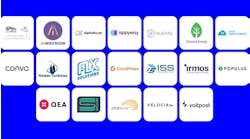Mobility Innovation Center: Next generation transit data leads the way to better bus trips
University of Washington (UW) researchers used evolving bus data technology to pinpoint trouble spots on surface streets across an entire bus network and their work paves the way for others to follow.
Initiated by the UW Mobility Innovation Center and led by Dr. Don MacKenzie of the UW Sustainable Transportation Lab, the project team developed a prototype tool to visualize real-time data feeds from King County Metro and Sound Transit buses. The data identifies slowdowns, which indicate areas to look at for potential surface street improvements. Known as “TransitVis,” the project information and playbook are now available online.
Better decisions with better data
Transit agencies collect and share bus route data openly to allow web and app-based developers to publish schedules across different digital platforms. The standard format is “General Transit Feed Specification,” or GTFS. The insights are limited as actual service may not reflect scheduled service identified through this feed. (Think of the “ghost bus” that appears in the app but not on the street when waiting at the stop.)
The next iteration of this format is called GTFS-RT, which gathers real-time data from automatic vehicle locators on buses to capture travel speeds and locations with more precision. Mapping these data points can help identify problem areas to aid in spot improvements. This results in better insights for schedule planning as transit agencies often make broad adjustments along an entire route. This may include padding the schedule with extra time between stops or reducing speeds to keep a reliable schedule for riders. A more reliable trip is beneficial both for people who count on the bus and for growing ridership – so everybody wins.
Pivoting in the pandemic
When launched in 2020, the project initially intended to use the data to identify locations where delivery and ride-hailing services may potentially affect bus trips and increase travel times between stops. These insights would potentially help inform city transportation agencies about areas in need of curbside management, parking changes or load zones. Adjustments could then be made to improve bus reliability and allow personal pick-ups and drop-offs to function harmoniously. However, early assessments indicated that curbside pick-ups and drop-offs were not an issue to bus service on the studied routes. Still, the project team found a use in the real-time data.
Partnerships in innovation
Doing this work requires strong partnerships and collaboration. The UW team received support from Amazon, Bellevue Transportation Department, Challenge Seattle, King County Metro, Seattle Department of Transportation, Sound Transit and Uber. In addition to being accessible on the TransitVis website, the findings are published in the journal Public Transport. Dr. MacKenzie co–authored the paper, “Measurement and Classification of Transit Delays Using GTFS-RT Data,” with research assistant Zack Aemmer of the University of Washington and Dr. Andisheh Ranjbari, who is now at Penn State University.
What’s next?
It’s important to keep in mind that the type of data used is just one source of information, and there are opportunities to build off the methods highlighted. These include field observations and video streams to validate the information provided in a GTFS-RT and applying machine learning to automatically classify causes of delay based on signatures in the GTFS-RT data. Additionally, the tools will be adapted to accommodate a wider set of GTFS-RT feeds, making the tools truly “plug and play” for all users.
Finally, improvements in computational efficiency will allow for larger volumes of archived data to be analyzed online and in real-time, opening opportunities for analysis by a wider range of users. As this new data source continues to evolve, additional insights related to the number of passengers on board and how a bus speeds up, slows down, or stops at a curb, may be available to help improve the ride for passengers as well as system reliability.
Housed at CoMotion at the University of Washington, the Mobility Innovation Center helps partners scope near-term transportation projects that address critical challenges through data-based insights, creative ideation and applied research.



